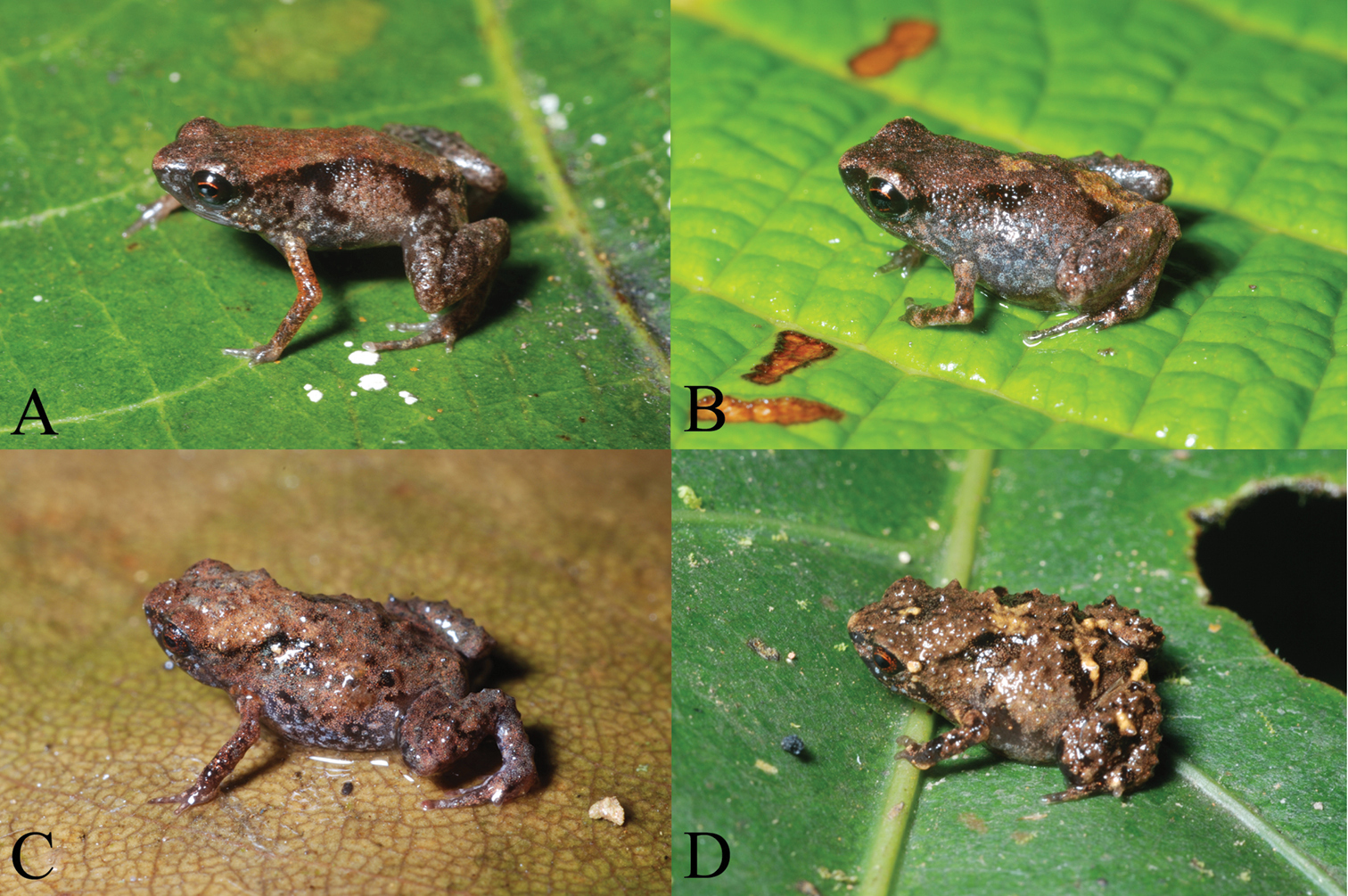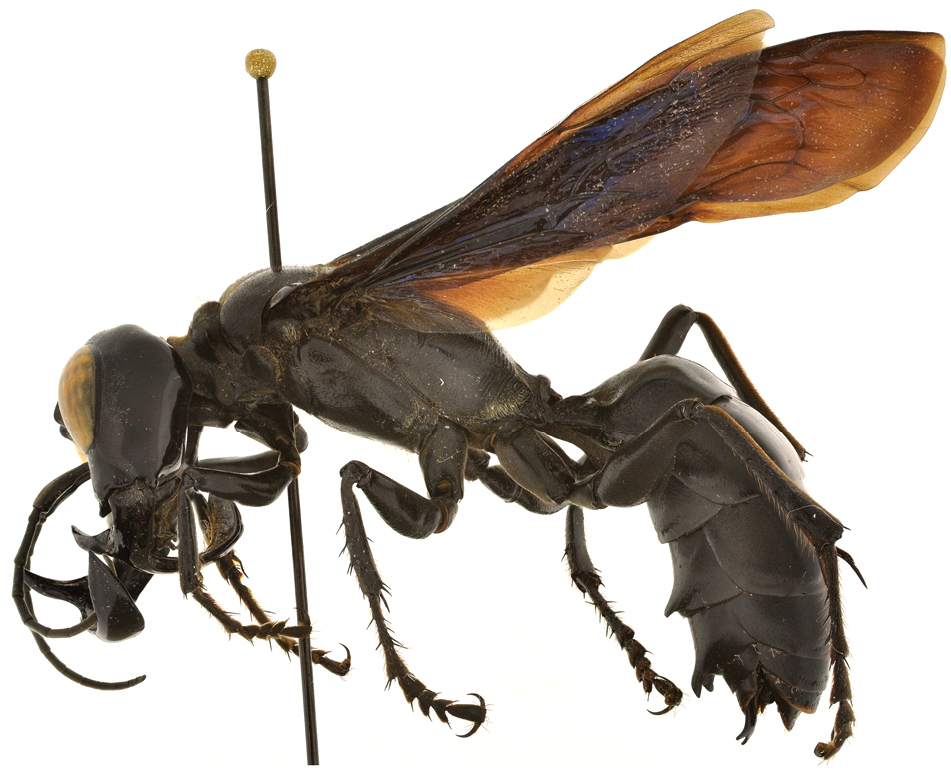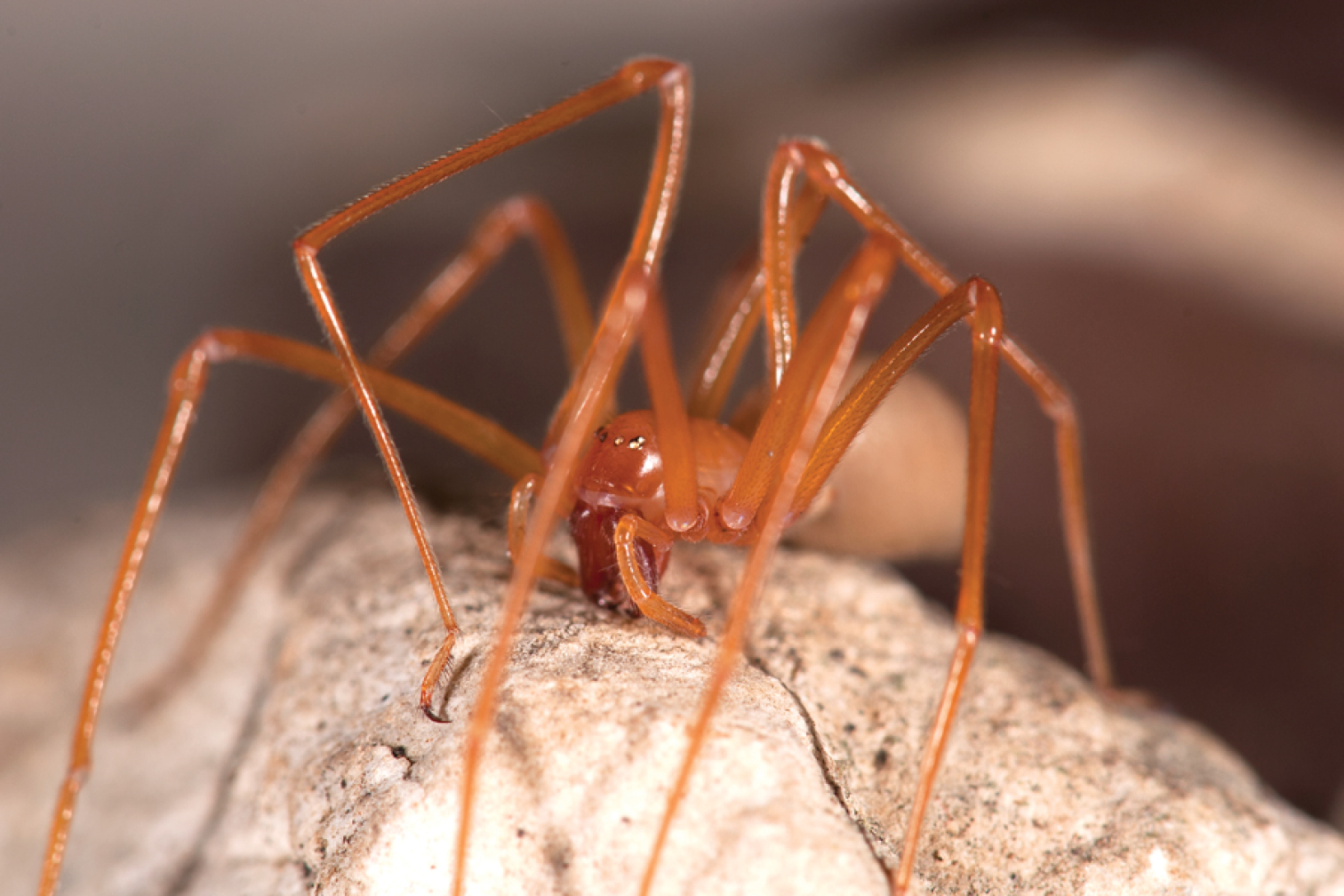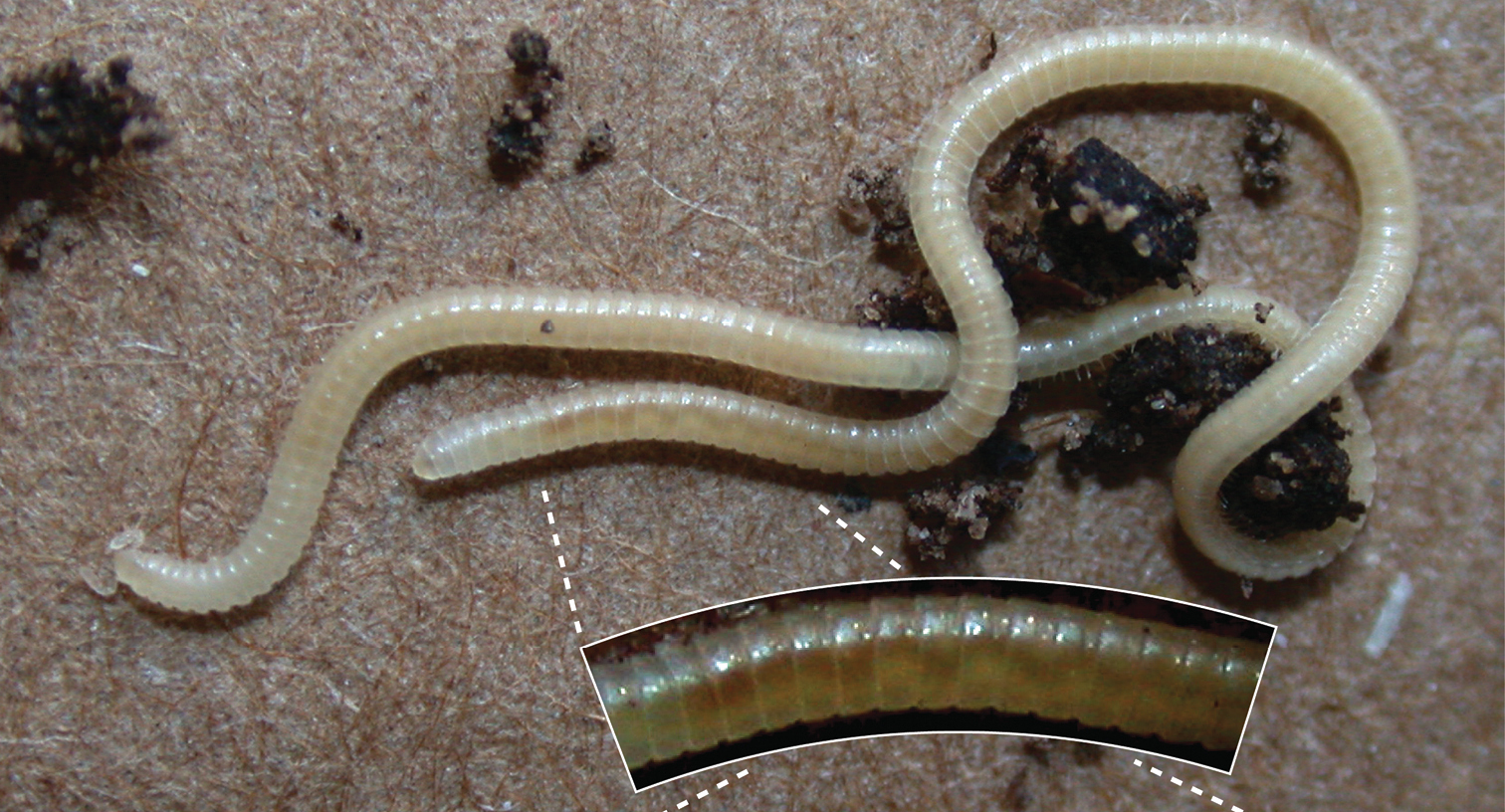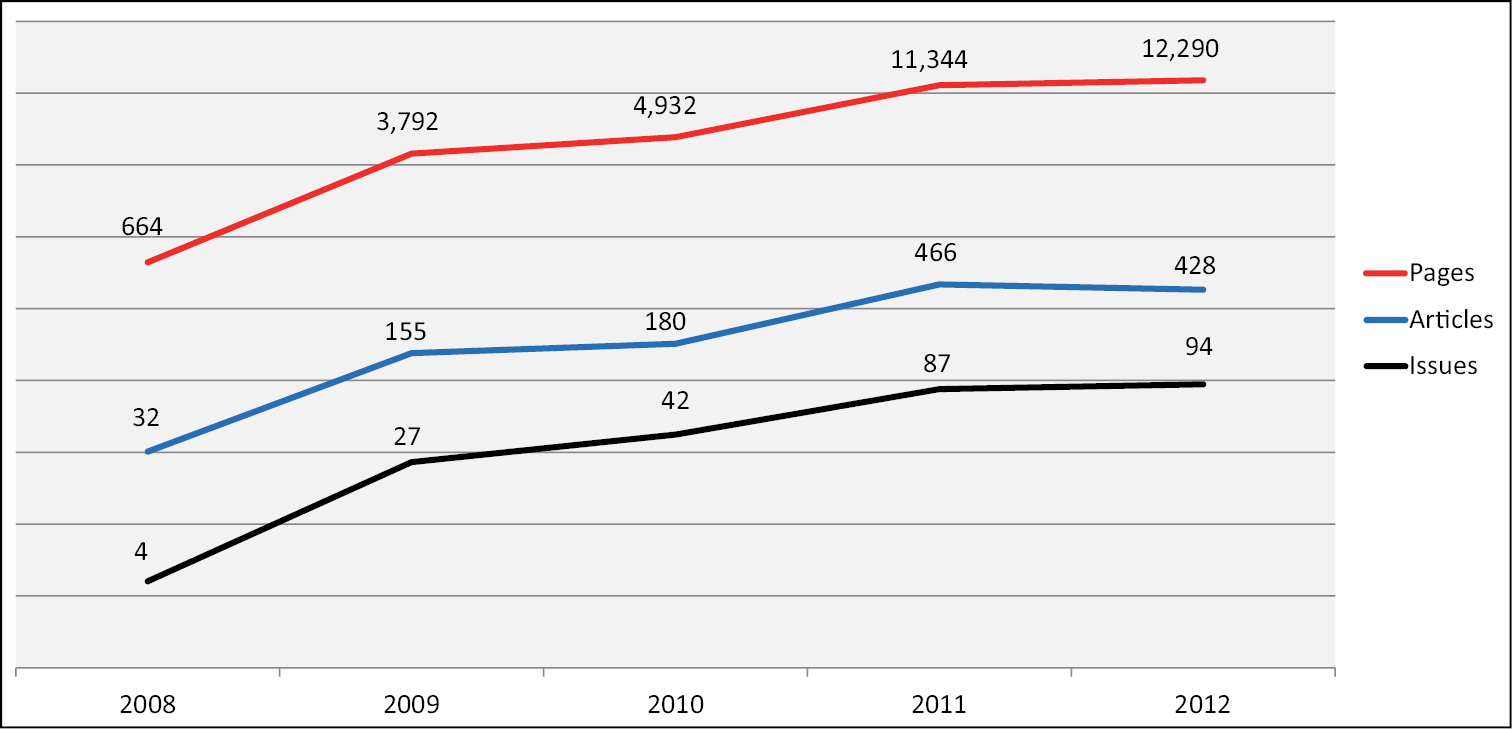






(C) 2012 Terry Erwin. This is an open access article distributed under the terms of the Creative Commons Attribution License 3.0 (CC-BY), which permits unrestricted use, distribution, and reproduction in any medium, provided the original author and source are credited.
For reference, use of the paginated PDF or printed version of this article is recommended.
‘Every good product I’ve ever seen is because a group of people cared deeply
about making something wonderful that they and their friends wanted.
They wanted to use it themselves’
Steve Jobs
On 13th of December ZooKeys published issue 250, the 76-page monograph “Introduction of the Exocelina ekari-group with descriptions of 22 new species from New Guinea (Coleoptera, Dytiscidae, Copelatinae)” by
The year 2012 has been important for the journal and the entire zoological community in many aspects. On the 4th of September, the International Commission on Zoological Nomenclature (ICZN) passed an amendment that considers a publication in a digital scientific journal ‘legitimate’ if meeting archiving criteria and the publication is registered at the ICZN’s official online registry, ZooBank. Pensoft was among the first supporters of the open-access idea, and one of the most active advocates of the e-only publishing of taxonomic data. Taking this into account and as recognition of Pensoft’s active role in promotion of taxonomy, the Commission decided to announce the Amendment of the Code in ZooKeys (
As a result of a fruitful collaboration, The Encyclopedia of Life (EOL) and ZooKeys on February 10th, 2012 announced a new joint project (EOASP) aimed at increasing the flow of new species descriptions from scientists in developing countries into the Encyclopedia of Life and promoting the open access publishing model in taxonomy. Another goal of this initiative was to support and educate the next generation of taxonomists in open science principles and to motivate publishers to modernize their publishing models and workflows to fit the changing needs of scientists and researchers around the world. Up to now, the EOASP project has supported 22 articles, in which 32 species, 7 genera and 1 family were described as new to sciences, and several more taxa were re-described.
The EOASP project was preceeded by another joint initiative with EOL called “Fabulous New Species collection” launched in January 2012. Its main aim was to bring together and promulgate the scientifically notable new taxa described every year in ZooKeys and other Pensoft’s journals and simultaneously registered in EOL. A short annotation written in a popular language explains why the new species is interesting in an attempt to draw the attention of the general public and the world mass media to it.
In 2012, a new pilot project for establishing the Online Identification Key (OIK) as a new type of scientific article that is a derivative of the Data Paper was put forward by ZooKeys. The publication of an online key in the form of a scholarly article is a pragmatic compromise between the dynamic structure of the internet and the static character of scientific articles. The authors of the keys will be able to continuously update their products, to the benefit of users. At the same time, the users will have available a citation mechanism for the online key, identical to that used for any other scientific article, to properly credit its author(s). The model is illustrated by an exemplar paper describing a new software platform for creating online keys, MOSCHweb (
The year 2012 will be remembered also with the ZooKeys special issue “No specimen left behind: mass digitization of natural history collections” initiated by the Natural History Museum in London. The editors Vince Smith and Vladimir Blagoderov brought together 18 papers by 81 authors to look at progress and prospects for mass digitizing of entire natural history collections. The compendium examines recent advances in imaging systems and data gathering techniques, combined with more collaborative approaches to digitization. Examples of research covered by the articles include a description of efforts to digitize 30 million plant, insect and vertebrate specimens at NCB Naturalis in the Netherlands; new scanning and telemicroscopy solutions to digitize the millions of pinned insect specimens held in the Australian National Insect Collection and its European and North American counterparts; and, new data portals providing central access to millions of biological specimens across Europe, etc.
The discovery of any organism in the world matters equally, be it a minute insect or a mammal. Several newly discovered animals published in ZooKeys at the verge of 2011/2012 and in 2012 were of immense interest and attracted the attention of the global society. These include, among others, the world’s smallest tetrapode, the largest wasp, and the leggiest animal, as well as a new fanged dinosaur from Africaand new family of cave spiders from the USA. In December 2011, ZooKeys announced the publication of the world’s smallest vertebrates – the New Guinean frogs Paedophryne dekot and Paedophryne verrucosa, which average length rarely exceeds 8–9 mm (
Portraits in life of Paedophryne dekot (A, B) and Paedophryne verrucosa (C, D). Photos: Fred Kraus, 2011. ZooKeys: doi: 10.3897/zookeys.154.1963
A new species of plant-eating dinosaur, named Pegomastax africanus, or “thick jaw from Africa”, was described in ZooKeys by Professor Paul Sereno of the University of Chicago in October 2012 (
The head of Pegomastax africanus. Reconstruction by Todd Marshall, 2012.
An unusually large wasp species, named by the authors Megalara garuda, was discovered during an expedition to the Indonesian island of Sulawesi (
Figure 3. Habitus of Megalara garuda. Photo:
A team of citizen scientists from the Western Cave Conservancy and arachnologists from the California Academy of Sciences found in caves in southwest Oregon, USA, a new, previously unknown family of spiders, named Trogloraptoridae (after the genus Trogloraptor or “cave robber”) that was published in ZooKeys in August 2012 (
International recognition was received also on the discovery of Kollasmosoma sentum, a new tiny parasitic braconid wasp with unusual behavior (
Habitus of live Trogloraptor marchingtoni. Photo:
Habitus of live Illacme plenipes ♀ with 170 segments and 662 legs. Photo:
From the 4th of July 2008 until the 10th of December 2012 the number of published articles and monographs has reached 1,245 or 32,416 pages overall. The number of published pages has grown from 11,344 in 2011 to 12,292 in 2012 (Fig. 6). Based on the analysis of 40 randomly selected papers published in 2012, the average publication time (from submission to publication) is 95 days. The average time from submission to acceptance is 72 days, and from acceptance to publication – 23 day.
Total number of published pages, articles and issues for the period 2008–2012.
Altogether, 2,904 new species-group, 233 new genus-group and 19 new family-group taxa have been published in the journal since its launch. Another 69 are currently in press (being registered in ZooBank) and will probably be published by the end of 2012 or early 2013. This makes 2,973 new taxa in total.
The top 10 most accessed ZooKeys papers through the 10th of December 2012 are listed in Table 1. The remarkable discovery of the new spider family Trogloraptoridae by
Top ten most viewed articles of ZooKeys (according to the ZooKeys website counter accessed on the 10th of December 2012).
| Article | Page views |
|---|---|
|
|
34,003 |
|
|
13,619 |
|
|
12,776 |
|
|
12,724 |
|
|
12,307 |
|
|
12,139 |
|
|
10,885 |
|
|
9,698 |
|
|
9,392 |
|
|
8,087 |
| Total | 135,119 |
In 2012, ZooKeys continued to popularize the published research through press releases, which in most cases were broadly mirrored by the global science media and increased the visibility of the journal on the global scene. A list of the top 10 most accessed posted through EurekAlert! press releases of ZooKeys articles is given in Table 2. Top two places are taken by press releases that were viewed by more than 44,000 science media and individual journalists, third position lying far below that number attracting the attention of ‘only’ around 16,000 communication experts. The top three most accessed press releases logically find place also in the “top 10” list of most viewed papers on the ZooKeys website.
Top 10 most accessed press releases of ZooKeys articles posted through EurekAlert! (from the EurekAlert! counter) for the period 1 December 2011 – 10 December 2012. The counter registers only the downloads from EurekAlert! mostly by science media and journalists. The actual number of readers may actually be a much higher than this number.
In conclusion, Pensoft Publishers’ flagship taxonomic journal ZooKeys continues to experience growth in 2012. Furthermore, ZooKeys continues to evolve its editorial workflow, constantly implementing new and improved publishing and dissemination technologies, thus always being on point for digital biodiversity science. This is backed up by the fact that the Impact Factor of ZooKeys has increased from 0.517 to 0.897 in 2011, and is expected to continue growing due to the high quality and great visibility of the published content. We are deeply indebted to all our authors, reviewers, subject editors, and readers, and journalistic followers without whose support ZooKeys would not have become such a successful journal! We also thank Rich Pyle for providing information on the new taxa registered in ZooBank.
